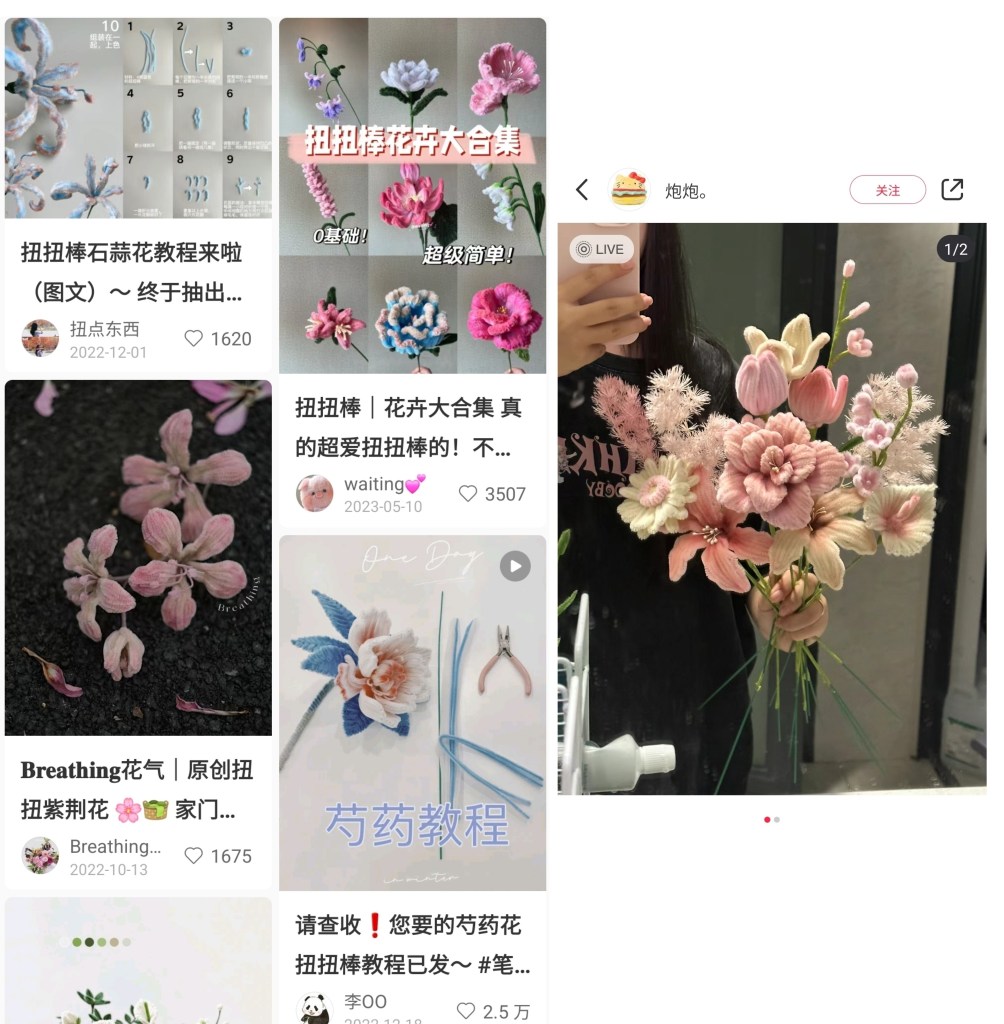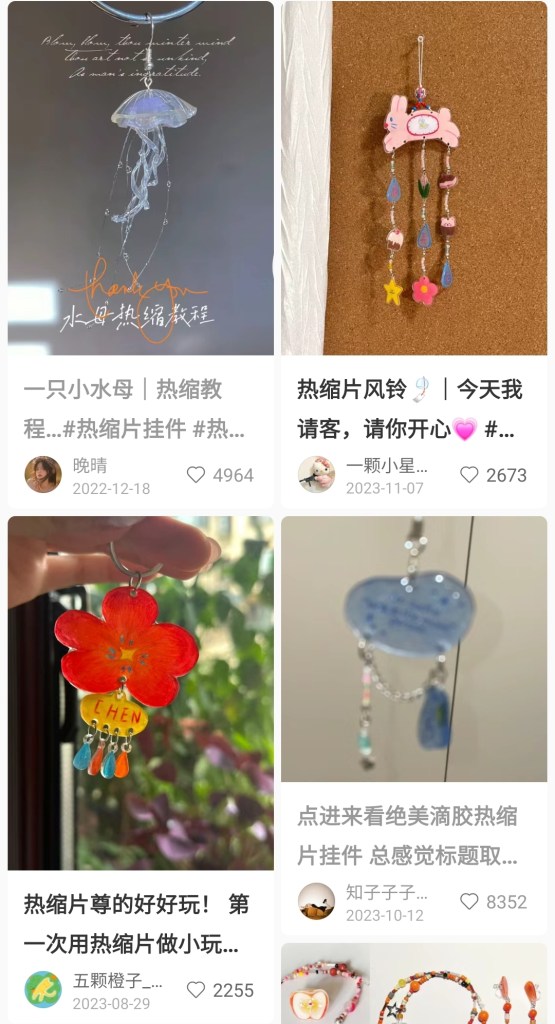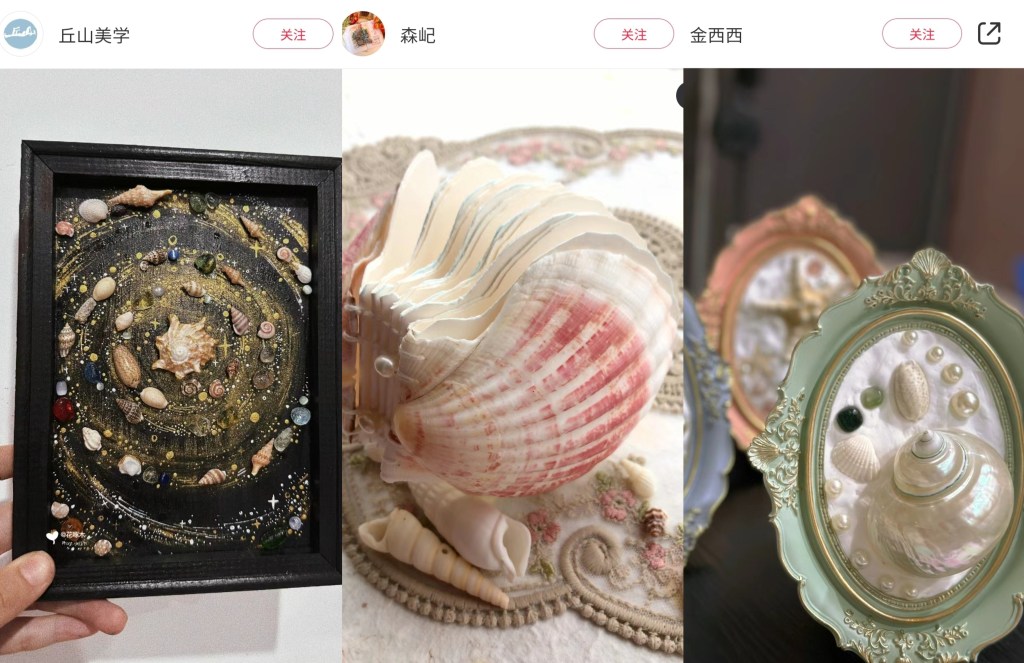Ever since Instagram made itself into a clunkier version of TikTok filled with sneaky ads and a pretty much superfluous “Explore” page, I’ve transplanted myself onto the popular Chinese social media platform, Xiaohongshu (aka Little Red Book), to satisfy my visual-centric urges.
Among make-up tutorials, OOTDs (outfits of the day), movie recommendations and more, there is also a hoard of art and craft inspirations that embody a refreshing aesthetic – compared to what you may have previously seen on Western social media sites.
Many of these have prompted me to rediscover the potential of everyday craft materials. No, I’m not talking about the bizarre trend of young people grooming mango pits, but rather things like air-dry clay, pipe cleaners and Shrinky Dinks, which were largely popular in the 1980s.
So here are some craft hobbies that you may not have heard of, or never would have suspected would become popular again.
Jump to:
Pipe cleaner flowers
When I think of pipe cleaner flowers, I think of the outline of five pink petals, a yellow centre and a green stem with two leaves. What I see on Xiaohongshu are intricate bouquets where every petal is made up of more parts than my entire flower.

The humble pipe cleaner is reclaiming its time to shine in the craft space, with creators making everything from pipe cleaner flowers to rings, hair accessories, bags and detailed mini sculptures. Pipe cleaners are the perfect blend of being malleable and irresistibly fluffy.
Read: What’s in a quilt convention?
There are also a plethora of tutorials around, and the technique mainly involves twisting, cutting and shaping the ends of the pipe cleaners with scissors or a lighter. After a few trials of my own, I’ve discovered that it’s not as easy as it looks and the quality of the pipe cleaner makes a massive difference in the final product.
My advice for those starting out is to choose something small and straightforward, but equally enjoyable, like this pipe cleaner heart ring.
Shrinky Dink creations

Shrinky Dinks, or Shrinkles, utilitise the properties of polystyrene sheets, which shrink when heat is applied, such as being in an oven. This allows makers to create intricate patterns on the sheets before reducing them to around one third of the original size in the final product.
When children play with these, however, the pieces tend to end up lying around or slipping under the couch to be lost for eternity. Many adult makers on Xiaohongshu use Shrinkles as a component of bigger products, such as wind charms, key rings, earrings and necklaces. Others have come up with methods to shape the polystyrene sheets into three-dimensional forms while capitalising on their translucent quality, to make things like jellyfish.
While one reason that this satisfying craft may have fallen out of fashion is due to concerns about the plastic’s toxicity; however, when done correctly, the temperatures needed to shrink polystyrene are significantly below those that would result in the release of dangerous toxins like dioxin.
Also, did you know that the first self-assembling robots made by Harvard and MIT utilised origami techniques and Shrinky Dinks in their construction? The heat produced from an embedded circuit causes the polystyrene sheets to fold at the hinge, allowing the robot to “stand”. See this in action.
Shell art
A craft hobby that combines beachside walks and quiet making indoors – what’s not to love? Using shells as a material for art and craft is common in Chinese seaside cities like Xiamen and Sanya, where local craftspeople make everything from puppies and chickens to dragons, and sell them as tourist souvenirs.
Much of this has been reimagined in the Xiaohongshu universe, where shells are being used to make Milky Way collages, wall hangings and even scallop shell-encased notebooks.

These creations look stunning and seem pretty straightforward to make, with basic materials including paint, glue, paper, air-dry clay and beads. If you want to accentuate the look of your shell art, adding a frame is a good idea and you don’t need to spend big bucks to acquire one. Something picked up from the op shop works just as well for a frame, and shells are lying practically everywhere on local beaches, making shell art an essentially cost-free craft hobby – though make sure the shells are not inhabited by living creatures and check if there are any rules specific to your location.





